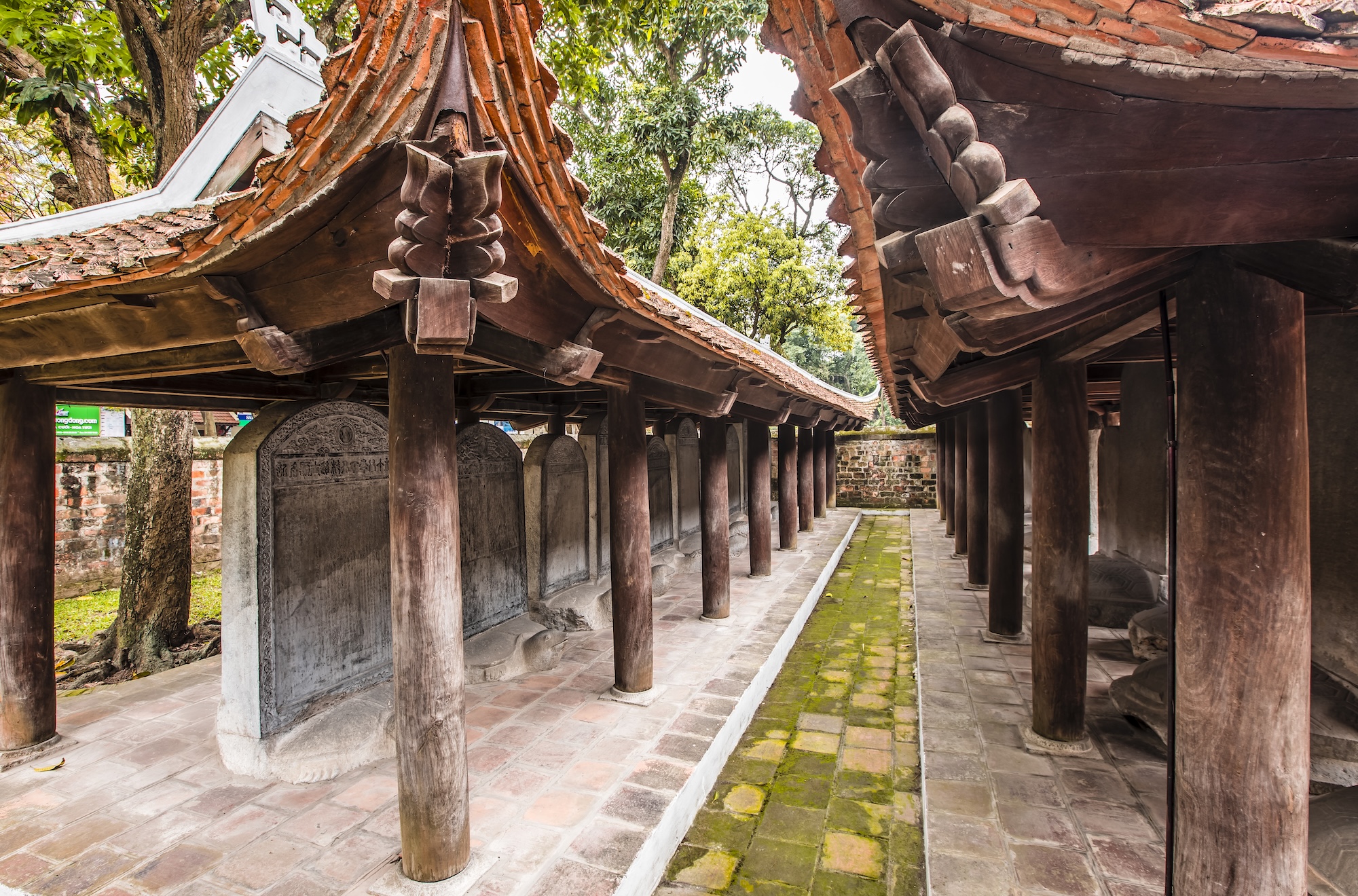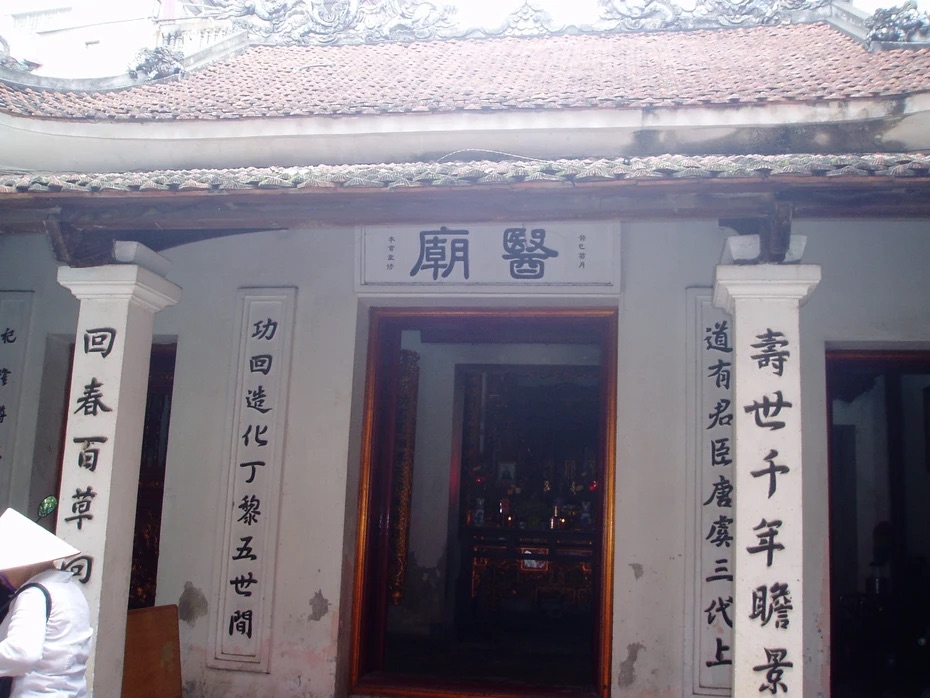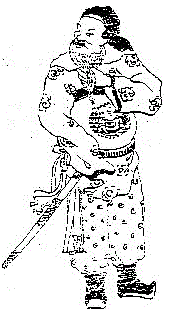One of the most iconic historical landmarks in Hanoi is the Văn Miếu – Quốc Tử Giám (Temple of Literature), Vietnam’s first national university. Some visitors come to pray for good luck before an important exam. Others stop by to snap a few photos in its peaceful, ancient setting. And many simply seek a moment of quiet in the heart of the bustling city. Over time, Văn Miếu has become a cultural and historical symbol deeply tied to the identity of Hanoi.
But in ancient Thăng Long (the former name of Hà Nội), Văn Miếu wasn’t the only temple of its kind. Alongside it once stood Y Miếu and Võ Miếu.
- Văn Miếu honored scholars and the spirit of learning.
- Y Miếu was dedicated to revered physicians.
- Võ Miếu commemorated the great military generals who defended the nation.
Three temples - three pillars of a complete society: wisdom, medical virtue, and courage. Together, they reflected the full cultural and moral vision of ancient Thăng Long, the imperial capital of Vietnam.
Văn Miếu - The Temple Of Literature

The Temple of Literature was established in 1070 during the reign of Emperor Lý Thánh Tông. Originally, it was built as a shrine to Confucius - the great philosopher, political thinker, and educator who founded Confucianism. The emperor later had statues of Confucius and his 72 disciples carved, held seasonal ceremonial offerings, and even issued a royal decree for the crown prince to study there.
In 1076, his successor Emperor Lý Nhân Tông founded Quốc Tử Giám, the very first national university of Vietnam, located just behind the temple. At first, it was reserved for the royal family, but over time it opened its doors to talented students from across the country. Many brilliant minds were trained here, including some of Vietnam’s most revered historical figures such as Nguyễn Trãi, Nguyễn Du, Lê Quý Đôn, and Ngô Thì Nhậm.
The complex of the Temple of Literature is organized into five distinct courtyards, each separated by walls and gates.
It begins at Văn Miếu Môn, the main gate, leading to Đại Trung Môn - the next entrance gate serving as a formal passage into the inner courtyards. From here, the path splits toward two gates - Thành Đức Môn and Đại Tài Môn. Next stands Khuê Văn Các, a small yet iconic pavilion with an eight-sided roof, circular windows on all four sides, and elegant calligraphy panels. The Stelae of Doctors courtyard contains 82 stone stelae, each inscribed with the names and hometowns of scholars who passed the royal exams over centuries.
Moving further inward, you'll find the Thiên Quang Well - a square-shaped reflecting pool flanked by the stelae halls. At the heart of the complex is the main temple honoring Confucius and his four greatest disciples (Tứ Phối), featuring the solemn Bái Đường hall and the grand horizontal plaque “Vạn Thế Sư Biểu” (The Teacher of Ten Thousand Generations), which is a gift from Emperor Kangxi of China’s Qing Dynasty.
To the sides stand the Tả Vu and Hữu Vu halls, once used to worship Confucius’s most outstanding students, including Chu Văn An and Trương Hán Siêu, along with Vietnam’s greatest Confucian scholars.

The final courtyard is Khải Thánh, where students were educated in both knowledge and ethics. In line with Confucian teachings, which place filial piety at the root of all virtues, this space also honors the parents of Confucius, completing the circle of respect and moral devotion.
Today, the Temple of Literature is not only a national historical monument, but a living symbol of Vietnam’s deep respect for education and talent. It has been recognized by UNESCO for its 82 stone stelae, which are inscribed as part of the Memory of the World heritage.
Y Miếu - The Temple Of Medical Virtue
The Temple of Medical Virtue was built in the mid-18th century during the reign of Emperor Lê Hiển Tôn. It honors two of Vietnam’s most revered physicians: Tuệ Tĩnh and Hải Thượng Lãn Ông Lê Hữu Trác.

Tuệ Tĩnh, born Nguyễn Bá Tĩnh, passed the prestigious Thái học sinh (Doctoral) examination in his early twenties. Rather than becoming an official, he chose a life of Buddhist practice and traditional medicine. He cultivated medicinal herbs and treated the sick, earning the title “Ông Thánh thuốc Nam” - “The Saint of Southern Medicine.” On a diplomatic mission to China, he impressed the Ming emperor, who granted him the title “Đại Y thiền sư” - “Great Medical Zen Master” and appointed him as a royal physician. He lived out his days in China, leaving behind important medical texts such as “Nam Dược Thần Hiệu” (Miraculous Southern Remedies) and “Thiền Tông Khóa Hư Lục” (Zen School Teachings).
Hải Thượng Lãn Ông, whose real name was Lê Hữu Trác, was another towering figure in Vietnamese medicine. Although he passed the hương cống (regional exam), he chose not to pursue a bureaucratic career. Instead, he returned to his mother’s hometown in Hương Sơn, Hà Tĩnh, where he devoted his life to studying medicine, prescribing herbal remedies, and teaching younger generations. Being a prolific writer and scholar, Lãn Ông authored the monumental “Y Tông Tâm Lĩnh”, a 28-volume encyclopedia on traditional medicine. He also penned “Thượng Kinh Ký Sự”, a travelogue chronicling his journey to the capital Thăng Long in 1782, where he was summoned to treat the crown prince Trịnh Cán.
Through many periods of restoration, The Temple of Medical Virtue has retained its architectural charm. Today, it stands as a harmonious, square-shaped temple complex featuring two rows of traditional ba gian (three-room) houses with double-tiered tiled roofs and elegant upward-curving eaves. The roof ridge is adorned with motifs of dragons flanking the sun, lions playing with a pearl, and old plum trees transforming into dragons.
Inside, a high vaulted passage leads to the main sanctuary. At its center stands a grand wooden altar, elaborately carved with dragons, flowers, and fruits - painted red and gilded in gold. Six square columns at the front are decorated with raised calligraphic couplets. In addition to Tuệ Tĩnh and Hải Thượng Lãn Ông, the temple also honors Thần Nông (the God of Agriculture and Medicine) and other respected physicians and scholars.

After Hà Nội’s liberation in October 1954, the Temple of Medical Virtue began to receive state attention for preservation and restoration. Since being entrusted to the Vietnamese Traditional Medicine Association, the site has served as both a sacred space of worship and the Association’s official headquarters. Every year, on the 15th day of the first lunar month, a memorial festival is held here to honor Vietnam’s great physicians - a day now recognized as the official anniversary of the traditional medicine profession.
For its historical and architectural significance, the Temple of Medical Virtue was designated a national historical and cultural site by the Ministry of Culture and Information in 1981.
Võ Miếu - The Temple Of Martial Valor
Established in 1740 under the rule of Lord Trịnh Doanh, the Temple of Martial Valor was built to honor military generals who had made great contributions to the nation. It was a sacred and majestic temple that once stood in the southwest corner of the ancient Thăng Long Citadel, near the present-day intersection of Hoàng Diệu Street and Điện Biên Phủ Avenue.

According to the historical chronicle “Khâm định Việt sử thông giám cương mục” (The Imperially Commissioned Annotated Mirror of Vietnamese History), the Temple of Martial Valor was a shrine dedicated to both legendary Chinese and Vietnamese generals. At the center of the temple stood an altar to Thái Công Vọng (also known as Khương Tử Nha), a revered figure in classical military strategy. Flanking him in the East and West Halls were the spirit tablets of 18 prominent generals, including Sun Tzu and Guan Zhong.
Most notably, the Vietnamese national hero Trần Quốc Tuấn, also known as Hưng Đạo Đại Vương, was honored with equal reverence, signifying the temple’s recognition of homegrown military brilliance and the nation's deep respect for those who defended its sovereignty. There was also a separate shrine dedicated to Guan Yu, the Chinese general celebrated throughout East Asia as a symbol of loyalty and righteousness.
After the fall of Hà Nội to French forces in 1882, and the tragic suicide of Governor Hoàng Diệu in defense of the citadel, the Temple of Martial Valor gradually disappeared from the city’s physical landscape. Today, no visible trace of the temple remains.
5AM is Vietnam’s first-ever sunrise music event, co-hosted by Vietnam Airlines, SpaceSpeakers Group, and Vietcetera. After successful editions in Ho Chi Minh City and Da Lat, Season 3 of 5AM arrives in Hanoi - awakening the thousand-year-old capital with music, sports, and culture under the theme Eye-Conic Hanoi.
More than just a music event, 5AM Season 3 kicks off with the 5AM Run, sparking fresh energy and healthy habits, alongside the Heritage Race, a cultural activity designed to inspire young people to explore and fall in love with Vietnam through iconic landmarks across Hanoi.
Limited tickets available. Don’t miss your chance to be part of Hanoi’s most Eye-Conic sunrise - click here to join the experience.
